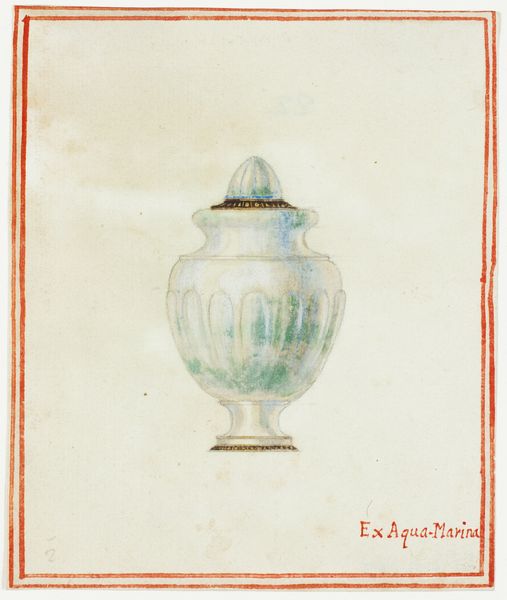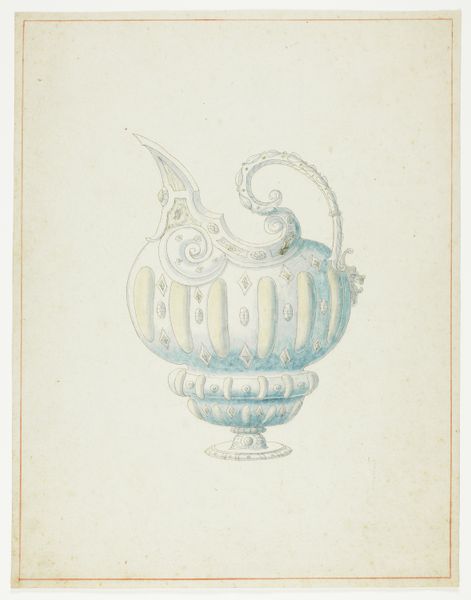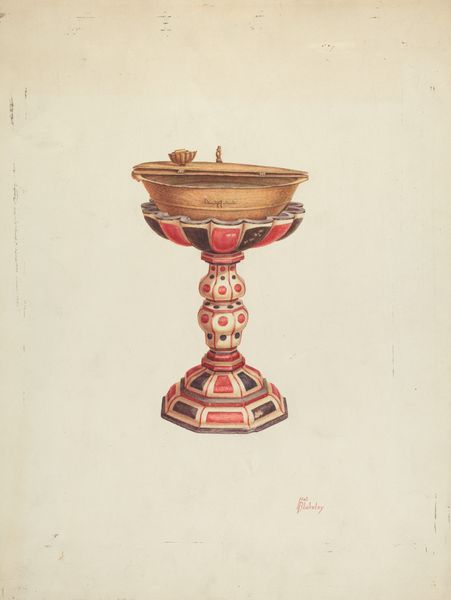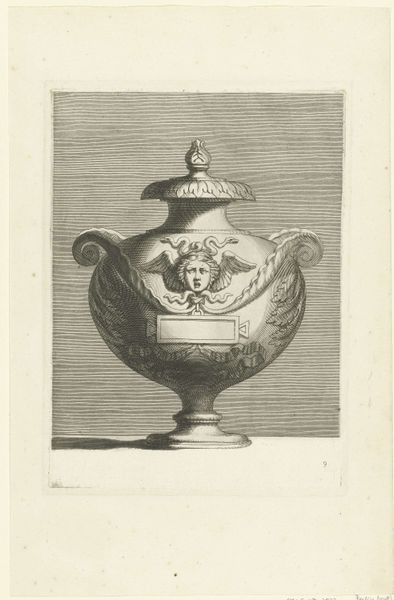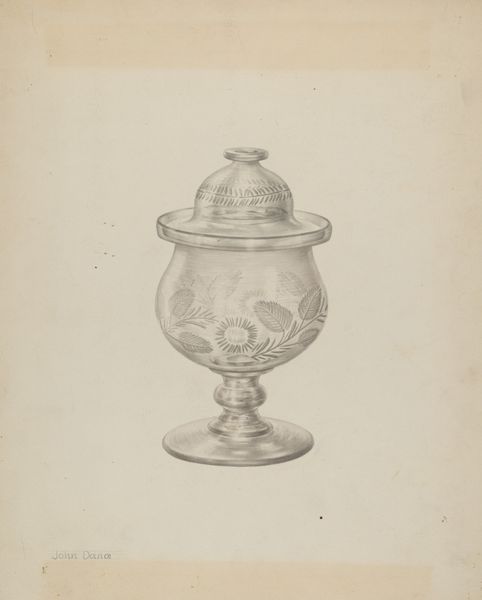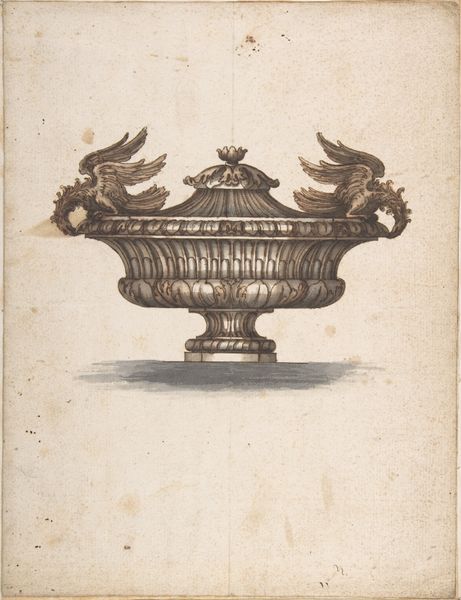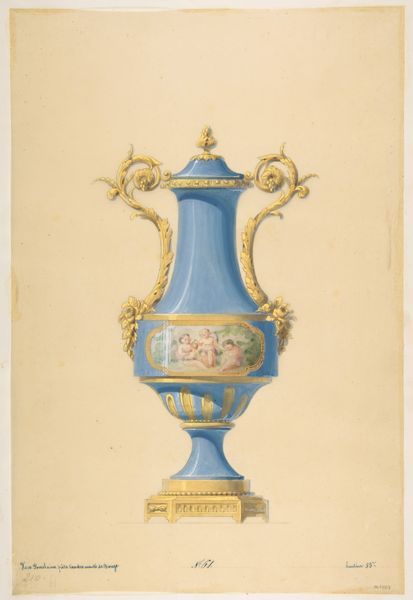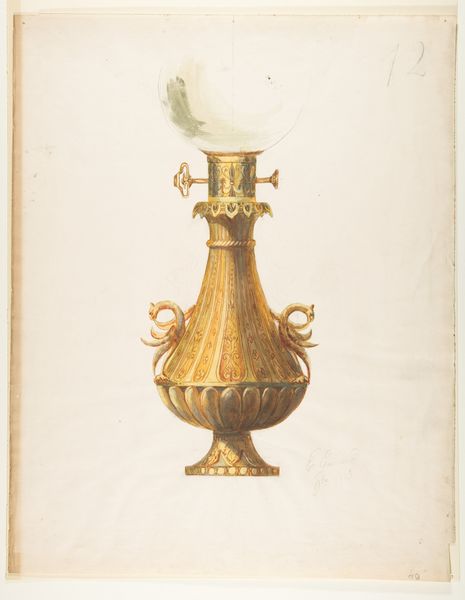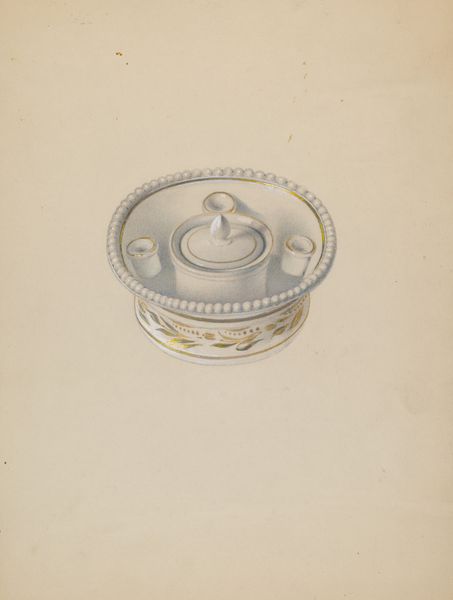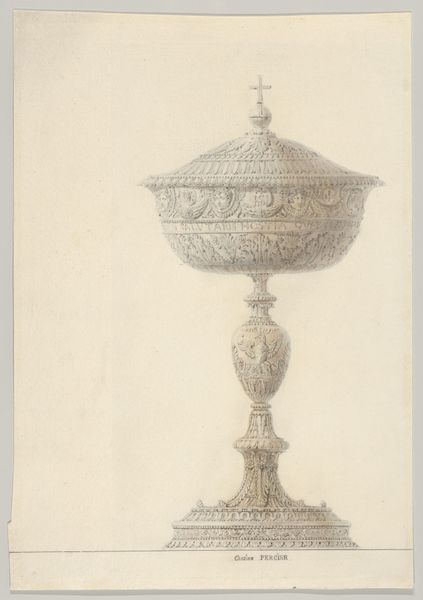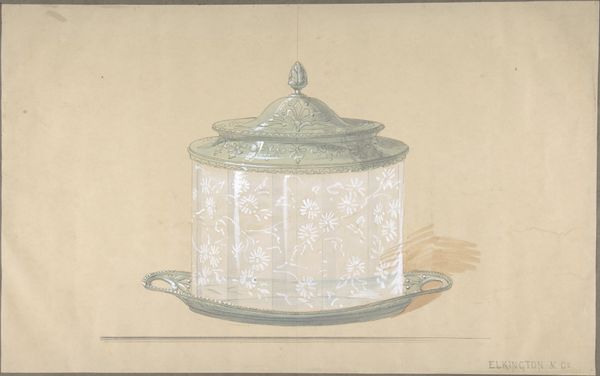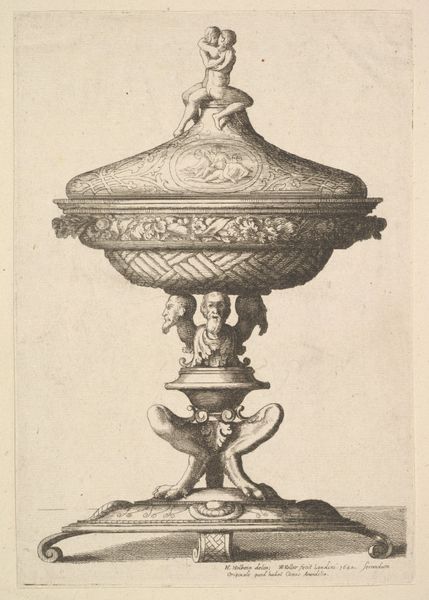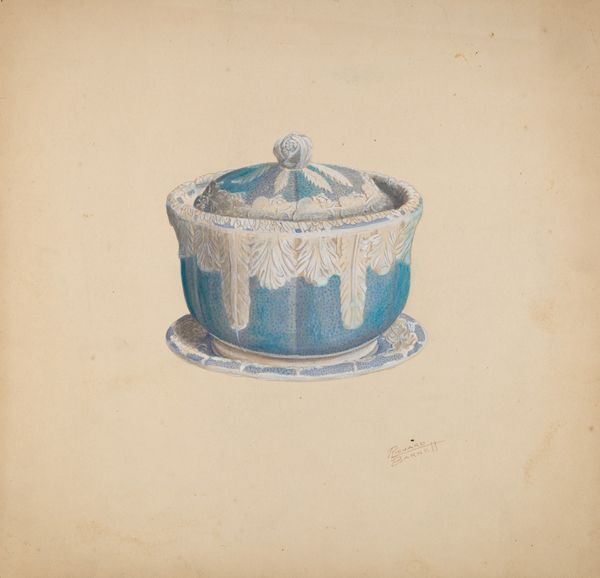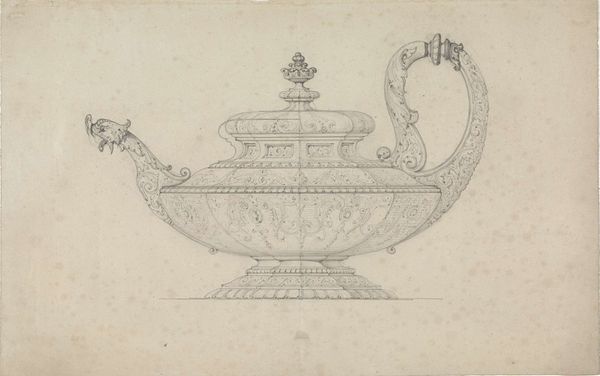
drawing, print, gouache, paper, chalk
#
drawing
# print
#
gouache
#
paper
#
chalk
Dimensions: 137 × 150 mm
Copyright: Public Domain
Editor: This is a drawing of an Agate Covered Bowl by Giuseppe Grisoni, dating from around the 18th century, made with drawing, print, gouache, paper, and chalk. The bowl appears delicately rendered, with a focus on the luxuriousness of the materials. How can we understand the deeper meaning of this artwork beyond its aesthetic appeal? Curator: The artwork presents an interesting intersection of material culture, power, and representation. Objects like this bowl, crafted from precious materials, were not just decorative. They symbolized wealth, status, and global trade networks, reflecting complex colonial power structures that often exploited labor and resources. Consider who might have owned such a bowl. Editor: I hadn’t thought about the colonial connection so directly. Was the ownership tied to a particular social class or gender at the time? Curator: Absolutely. Luxury goods were primarily acquired by the aristocracy and the emerging merchant class. These objects would have signified their cultivated taste and connections. Women of high status were also significant patrons and consumers. Ownership offered ways for them to assert social influence, but these objects can also become symbols of patriarchal power. The bowl thus holds stories of both agency and oppression, of how materials become entangled with social identities. What do you think about the decision to represent the bowl in a drawing? Editor: Perhaps that makes it more accessible? The drawing renders the bowl more symbolic and open to interpretation compared to the actual physical object. It also flattens it. Curator: Yes, the medium alters its message. The drawing might have functioned as a record, a proposal for a potential commission, or circulated as a signifier within a network of connoisseurs. Considering it as a trace allows us to ask vital questions about materiality, representation, and power that are, and continue to be, deeply entwined. Editor: I see now that studying a seemingly simple drawing of a bowl actually leads to complex questions about art, class, and global exchange. Curator: Precisely. It's a lens through which to examine broader cultural forces. We often reduce beauty to just prettiness, and it's interesting to reveal what’s going on behind it.
Comments
No comments
Be the first to comment and join the conversation on the ultimate creative platform.
